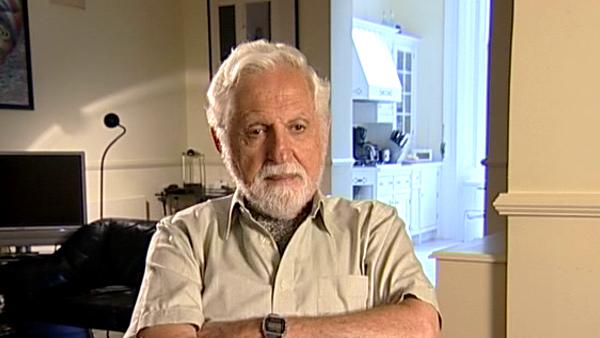NEXT STORY

Pygmy chimps and a lend-lease operation
RELATED STORIES

NEXT STORY

Pygmy chimps and a lend-lease operation
RELATED STORIES


|
Views | Duration | |
|---|---|---|---|
| 91. Sponges have the weirdest forms of fatty acids | 63 | 05:04 | |
| 92. The great dilemma within science | 113 | 02:40 | |
| 93. The history of the pill | 129 | 05:44 | |
| 94. Discovering that progesterone is not orally active | 105 | 06:18 | |
| 95. Synthesising orally active progesterone | 74 | 07:07 | |
| 96. International contribution in the development of the pill | 60 | 04:41 | |
| 97. East-West dominance in contemporary science | 58 | 04:32 | |
| 98. Can science work in Africa? | 77 | 04:15 | |
| 99. Pygmy chimps: research priorities in the Congo | 52 | 04:23 | |
| 100. Head of a primatology committee | 43 | 03:25 |


One would intuitively say monkeys would be, of course, the one. But, you know, you could use the Stein analogy, and say you know a rose is a rose is a rose... you could say a monkey is a monkey is a monkey but that is nonsense because a monkey has very little to do with higher primates. And higher primates... and is our closest relative the gorilla? Well it isn’t. Anyway, besides the gorilla is hardly an experimental animal that you want to use. And I'd, you know, did a little bit of reading then, discovered that there is... at that time a species that was called the pygmy chimp, which is a smaller version of the chimp. Because the chimp was considered to be the closest relative to us genetically speaking. Now the pygmy chimp by definition is smaller, about half of the size to a general chimp... to a general chimpanzee. And is... was on the endangered list. And virtually the world's population of pygmy chimps occurs in the Congo. Especially in the central and eastern portion, in particular in the so-called Équateur province. So I said, well here is an interesting thing, we could kill several birds with one stone. Try and establish a centre for pygmy chimp research in the Congo, preferably on an island in the Congo, where it could be an open colony where you’d learn how to breed pygmy chimps. So it had the advantage, first of all, to maintain an endangered species and secondly produce them and then try to do some biological research on them, in particular biochemical research and really determine whether they are as closely related to us. Nowadays, of course, you do it by examining their genome. At that time, it was just even blood pictures and hormone levels, and stuff like this. But do really serious research on pygmy chimps. Now there was some research that had, of course, been done on pygmy chimps. Interestingly enough, especially by some Japanese. But it was very minimal and it was really much more of the Jane Goodall type of research... observational animal behaviour studies. And I felt that the missing one is of course the biochemical leg. And so that was the suggestion.
Well the Congolese were... by that time the Zairean people were widely enthusiastic and the National Academy was game for this, and established a small primatology sub-committee. Well that is a group that is very competitive and incestuous because there are not very many major primatology primate research centres in the world and those that exist all want to have their own specialty and that would be a real coup. So there was the Yerkes Centre in Atlanta, which was the great one at that time, there was the Smithsonian, and there were a number of other places. And who should they appoint as Chairman of this? Well they, I think it was a wise decision, take someone who had no vested interest in this, which was a chemist, namely me. So I became the leader of these primatologists, knowing that I knew nothing about primatology, not then and not much now. But I was, I think, from an organisational standpoint, exactly the right person. Because I had no axe to grind whatsoever. I was only interested in that problem.
Austrian-American Carl Djerassi (1923-2015) was best known for his work on the synthesis of the steroid cortisone and then of a progesterone derivative that was the basis of the first contraceptive pill. He wrote a number of books, plays and poems, in the process inventing a new genre, 'science-in-fiction', illustrated by the novel 'Cantor's Dilemma' which explores ethics in science.
Title: Head of a primatology committee
Listeners: Tamara Tracz
Tamara Tracz is a writer and filmmaker based in London.
Tags: Congo, Yerkes National Primate Research Center, Smithsonian Institution, Province of Équateur, Zaire, Pygmy Chimp, Edith Stein, Jane Morris Goodall
Duration: 3 minutes, 25 seconds
Date story recorded: September 2005
Date story went live: 24 January 2008